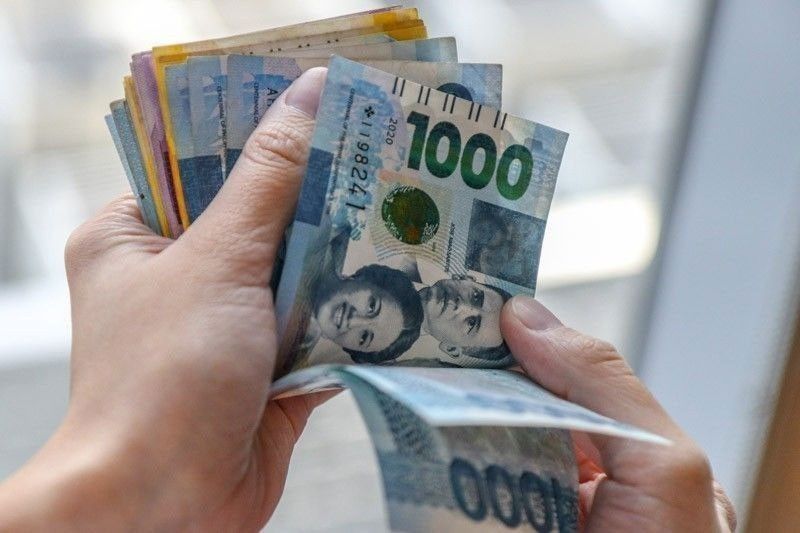Peso seen slumping near 62:$1 by yearend

MANILA, Philippines — An economist sees the peso slumping closer to 62 to $1 level by the end of the year amid the continued strengthening of the greenback as the hawkish US Federal Reserve delivers jumbo rate hikes to tame inflation.
Jonathan Ravelas, managing director at eManagement for Business and Marketing Services, said in an interview with “The Chiefs” on One News that the local currency is seen further weakening to record low levels of around 61.80 to 61.90 per $1 by the end of this year.
“In the near term, which is probably between now and yearend, we could probably hit 61.80 to 61.90 before we eventually get some adjustments,” he said.
The peso has been tumbling to new all-time lows and touched the 59 to $1 level for the first time last Wednesday after hitting a record low of 58.99 to $1 last Sept. 27.
Ravelas is banking on remittances from overseas Filipino workers in the fourth quarter to soften the weakening of the local currency. OFWs usually send more money to their loved ones toward the end of the year due to the Christmas holidays.
“So hopefully the remittances will still come,” he said.
But the sad part about remittances, he explained, is that OFWs are now sending less as the value of the US dollar has become bigger.
Latest data from the Bangko Sentral ng Pilipinas (BSP) showed personal remittances inched up by 2.7 percent to $20.33 billion from January to July this year compared to $19.78 billion in the same period last year.
Of the total amount, cash remittances coursed through banks grew by 2.8 percent to $18.26 billion from $17.77 billion.
This is lower than the four percent target set by the BSP for this year.
Rep. Joey Salceda, chairman of the ways and means committee at the House of Representatives, earlier said the peso could depreciate to a range of 65 to 68 per $1 as the US Fed continues to jack up interest rates to combat inflation.
Ravelas, who was former chief market strategist at Sy-led BDO Unibank, said that the weakening of the peso, as well as other major currencies in Asia, is fueled by the rising US dollar.
“In the last so many years, we have heard the saying when the US catches a cold, Asia gets the flu. So eventually this situation is really fueled by the rising US dollar,” he said.
According to Ravelas, the Philippines has no other choice, but for the BSP to match the rate hikes being delivered by the US Fed.
He pointed out that the Philippine central bank was very conservative in raising interest rates, delivering a 25-basis point hike on May 19 followed by another 25 basis points on June 23.
During the period, the peso depreciated quickly to a range of 55 to 56 per $1 from a range of 52 to 52.50 per $1.
“So, you can’t fight the Fed. It’s a matter of really trying to go with the flow of the depreciation of peso mainly because of the situation, and it’s all driven by inflation,” Ravelas said.
Inflation in the Philippines averaged 4.9 percent from January to August, exceeding the BSP’s two to four percent target range. The central bank’s Monetary Board has raised its inflation forecasts to 5.6 instead of 5.4 percent this year, and 4.1 instead of four percent next year.
“If not for the Russia-Ukraine war, I don’t think we will probably see a much exaggerated depreciation of the peso,” he added.
The situation, he said, also happened in 1994, but a lot of foreign portfolio investments were flowing into the country at that time.
Likewise, during the Asian financial crisis, the economist said the peso plunged all the way to 46 to $1 from only 23 to $1.
The BSP has so far raised interest rates by 225 basis points this year, bringing it to 4.25 percent from an all-time low two percent. The peso has depreciated by 15.7 percent to 58.99 last Tuesday from 50.999 to $1 in end 2021.
Aside from hiking key policy rates, he said structural reforms such as Republic Act 11534 or the Corporate Recovery and Tax Incentives Act (CREATE), the revisions to the Public Services Act via RA 11659, and other ease of doing business measures, should be implemented as the Philippines is seen by investors as an attractive investment site.
- Latest
- Trending































